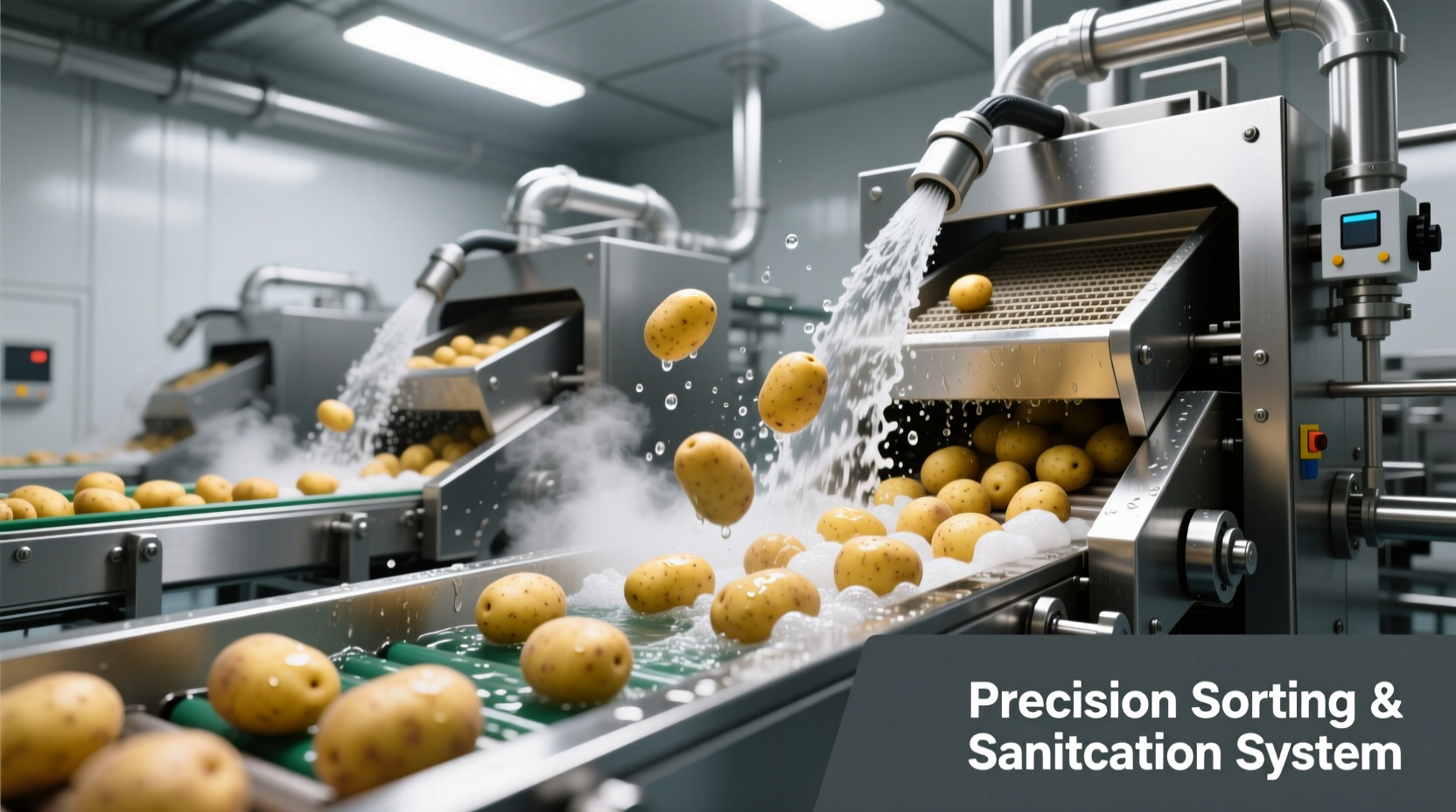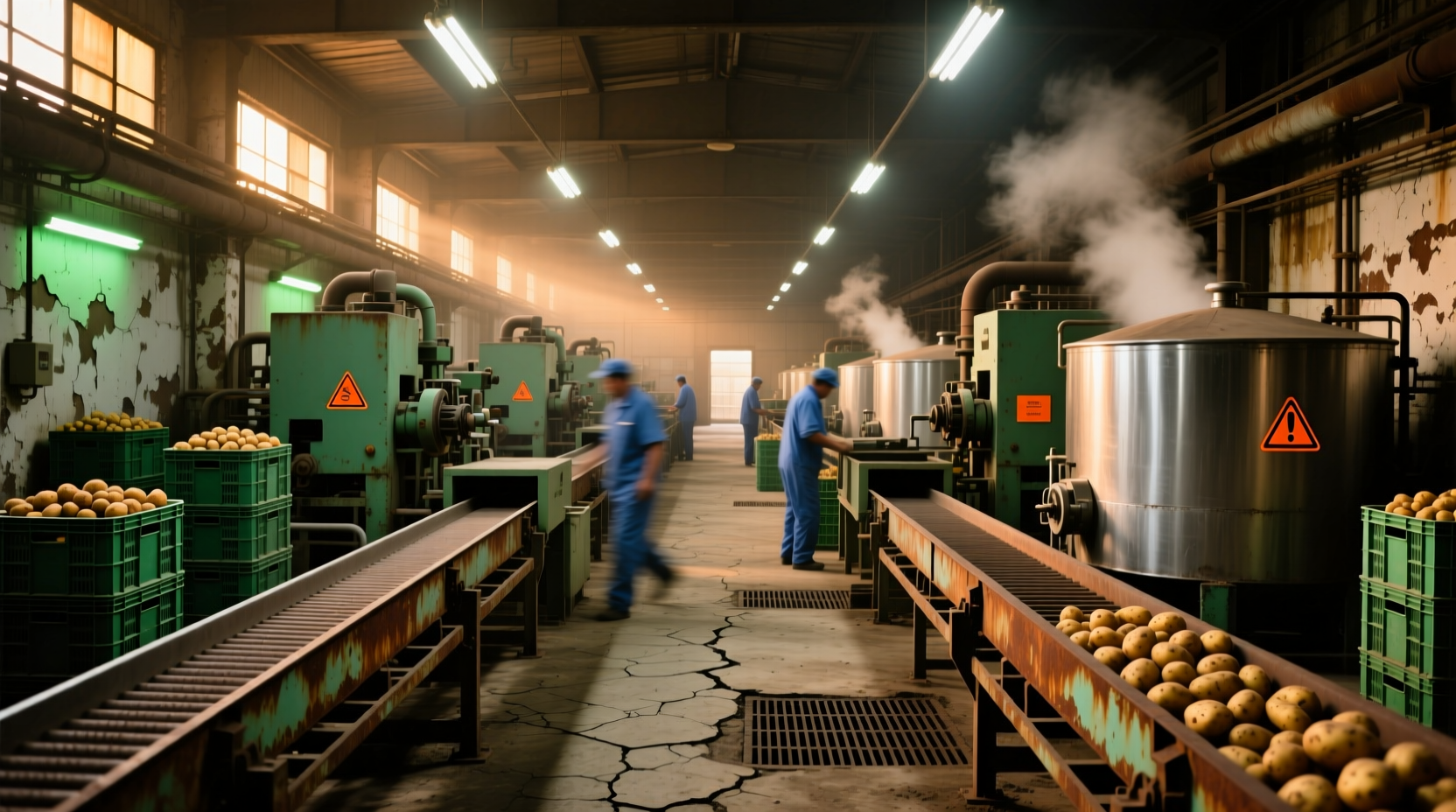Ever wondered what happens after potatoes leave the farm? Understanding potato factory operations reveals how this humble tuber becomes your favorite crispy snacks and convenient food products. This comprehensive guide explains the industrial journey of potatoes from field to finished product, highlighting key processes, quality standards, and industry innovations that ensure consistent, safe, and delicious potato-based foods reach your table.
How Potato Processing Actually Works: Step-by-Step
Modern potato factories operate as highly efficient food manufacturing systems designed to handle massive volumes while preserving quality. The transformation from raw potato to finished product follows a carefully engineered sequence:
Industrial Potato Processing Timeline
- Harvest & Delivery: Potatoes arrive at the factory within 24-48 hours of harvesting to maintain optimal starch content and quality
- Initial Sorting: Automated systems remove stones, soil, and damaged potatoes using optical scanners and air jets
- Washing: High-pressure water systems with rotating brushes remove remaining soil and debris
- Peeling: Steam peeling or mechanical abrasion removes skins while minimizing product loss
- Inspection: Laser-guided cameras detect defects, discoloration, and foreign materials
- Processing: Potatoes are sliced, cut, or mashed according to final product requirements
- Cooking: Precise temperature and time controls for frying, baking, or dehydration
- Seasoning: Automated flavor application systems ensure consistent coating
- Packaging: Nitrogen-flushed bags or frozen packaging maintains freshness
- Quality Testing: Multiple checkpoints verify texture, color, moisture, and safety parameters
What Products Come From Potato Factories?
While many people associate potato factories only with chips and fries, these facilities produce a diverse range of products serving various food industry segments. Understanding these product categories helps consumers appreciate the versatility of industrial potato processing.
| Product Category | Processing Method | Key Quality Indicators | Primary Uses |
|---|---|---|---|
| Potato Chips | Slicing, frying, seasoning | Thickness consistency, oil absorption, crispness | Snack foods, retail packaging |
| Frozen French Fries | Cutting, blanching, par-frying, freezing | Color uniformity, texture, oil content | Fast food, restaurant supply |
| Dehydrated Flakes | Cooking, mashing, drum drying | Rehydration properties, color, flavor | Instant mashed potatoes, food manufacturing |
| Potato Starch | Extraction, purification, drying | Purity, viscosity, clarity | Food thickening, industrial applications |
| Specialty Products | Custom processing | Product-specific metrics | Ready meals, food service products |
Behind the Scenes: Quality Control in Potato Processing
Food safety and quality assurance represent critical components of modern potato factory operations. According to the USDA Agricultural Marketing Service, potato processing facilities must comply with strict standards throughout production. Each facility implements multiple quality checkpoints that monitor:
- Moisture content: Critical for shelf stability and texture (target range: 1.5-3% for chips)
- Color consistency: Measured using standardized color charts to ensure product uniformity
- Texture parameters: Precise testing for crispness, hardness, and mouthfeel characteristics
- Microbial safety: Regular testing for pathogens and spoilage organisms
- Foreign material detection: X-ray and metal detection systems at multiple stages
"The industry has made significant advances in non-destructive testing methods," explains Dr. Robert Thompson, food science researcher at the University of Idaho's Center for Potato Research. "Modern factories use near-infrared spectroscopy to assess sugar content in real-time, preventing darkening during frying."

Environmental Considerations in Modern Potato Factories
Today's potato processing facilities increasingly focus on sustainable operations. The European Potato Processors Association reports that leading factories have reduced water usage by 40% and energy consumption by 30% over the past decade through innovative technologies. Key sustainability initiatives include:
- Water recycling systems that treat and reuse up to 85% of process water
- Biogas production from potato waste to generate renewable energy
- Heat recovery systems that capture and reuse thermal energy
- Precision processing techniques that minimize raw material waste
- Comprehensive recycling programs for packaging materials
These environmental improvements haven't come at the expense of product quality. In fact, the American Journal of Potato Research published findings showing that sustainable processing methods often enhance product consistency while reducing environmental impact.
What Consumers Should Know About Potato Factory Products
Understanding industrial potato processing helps consumers make informed choices about the products they purchase. While factory-processed potato products sometimes face misconceptions, modern facilities maintain rigorous quality standards that often exceed what's possible in home kitchens.
When selecting potato products, consider these practical tips:
- Check ingredient lists for minimal additives - quality products often contain just potatoes, oil, and salt
- Look for certifications like Non-GMO Project Verified or organic labels if these matter to you
- Understand that consistent color and shape indicate quality control, not necessarily artificial enhancement
- Recognize that proper industrial frying uses precise temperature control to minimize acrylamide formation
- Consider the nutritional profile - some processed potato products retain significant potassium and vitamin C
For those interested in the origins of their food, many progressive potato factories now offer transparency initiatives, including facility tours and detailed information about their sourcing practices. The National Potato Council maintains a directory of processors committed to sustainable practices and quality standards.
Frequently Asked Questions
How long does it take for potatoes to become chips in a factory?
From delivery to packaged product, the complete process typically takes 2-4 hours. Potatoes move through the production line at approximately 25,000 pounds per hour in modern facilities, with the actual frying process lasting just 2-4 minutes under precisely controlled temperatures.
Are factory-processed potato products less nutritious than fresh potatoes?
Processing affects nutrient content differently depending on the method. Frozen French fries retain most potassium and vitamin C when properly processed. Dehydrated potato flakes maintain significant nutritional value when reconstituted correctly. While some water-soluble vitamins decrease during processing, factory methods often preserve nutrients better than home cooking due to precise time and temperature controls.
How do potato factories ensure consistent quality across batches?
Modern facilities use integrated quality management systems with multiple checkpoints. These include automated optical sorting, real-time moisture and sugar content monitoring, and statistical process control methods. Many factories implement Hazard Analysis Critical Control Point (HACCP) systems that identify potential quality issues before they affect the final product. Regular laboratory testing verifies compliance with established quality parameters throughout production.
What happens to potato waste generated during processing?
Responsible potato factories utilize nearly 100% of each potato. Peelings and process water solids become animal feed or fertilizer. Starch recovered from process water serves industrial applications. Advanced facilities convert organic waste into biogas through anaerobic digestion, generating renewable energy to power operations. According to USDA data, leading processors have reduced waste to landfill by over 90% through these comprehensive utilization programs.











 浙公网安备
33010002000092号
浙公网安备
33010002000092号 浙B2-20120091-4
浙B2-20120091-4